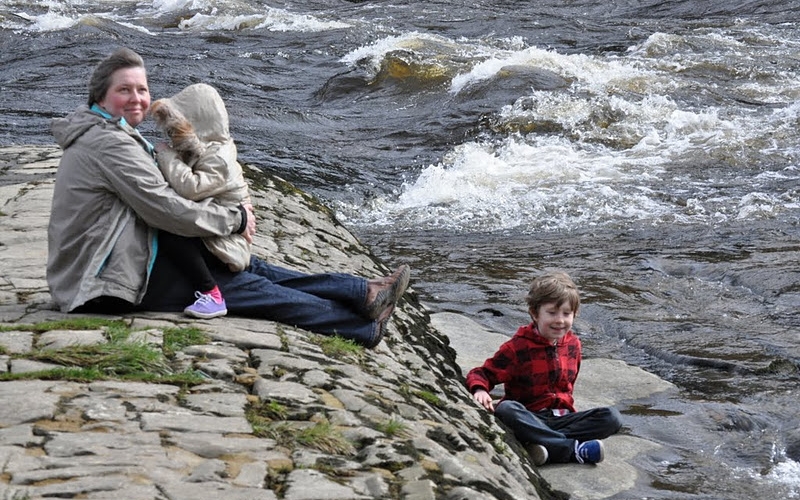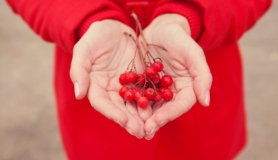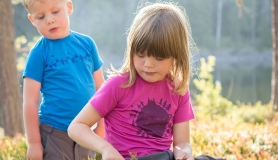Our Realisation
It dawned on us slowly; very slowly. We should have been happier; we had two lovely children, friends, a large beautiful detached Edwardian house in a nice area and good careers. But we thought that we could do better!
Our Problem
We were caught in the hamster wheel of two working parents, a long commute reduced my time with the children to a few low quality hours every evening. The house gobbled up money, energy and effort. Painting it was akin to the Forth Bridge. Heat wafted away through the innumerable gaps of an old house. It was great for parties, but that was the only occasion it felt fully used.
We barely knew our immediate neighbours. Children did not play on our road; young families could not afford to live there and like most streets cars zoomed along it too fast to allow children to play unhindered.
Our friends had busy lives just like us; it took effort, structure and diaries to see them. As our parenting philosophy evolved we wanted more flexibility so that we could be more consensual and follow the children’s needs in the moment rather than through a planned diary. It started with wanting to say “yes” more than “no”, to enhancing natural immunity and health, developing into a better understanding of non-coercive parenting and finally to the decision to home educate our children.
We wanted to meet more like-minded people to provide inspiration, support and help to stimulate us to live a greener, calmer life.
Our Search
We looked at local groups first, such Green Drinks and Women’s Environmental Network (WEN). My partner Elizabeth’s involvement with WEN helped us access inspiring people, which expanded our search and thoughts.
The idea of living in a community began when we saw an advert for work at a Camphill community. We were tempted, but decided that it might not suit our children so began looking at other communities instead. Community living seemed a great way to surround ourselves with interesting people, who could provide the catalyst that we sought.
The Diggers and Dreamers website gave us a link to the multitude of intentional communities that exist in the UK. We bought the book and looked at all the groups. Were there many children? Was the group big enough to have a variety of people? Did they share our philosophies? Did they have any spaces? What about the location? Did we want to live in the countryside, town or city? The countryside appealed in many ways, but would we then be dependent on a car? Could we imagine living there?
Our Answer
Cohousing stood out as a particularly appealing form of intentional community. It is a way of living which encourages strong neighbourhood living through sharing activities and resources. Members still have their own private homes and space, but have access to various community facilities, such as a common house where members can meet, relax and share meals. Other amenities might include play space, guest rooms, laundry facilities or workshops. One important aspect is that the community is planned, owned and managed by the residents.
It is a common in Scandinavia and the United States, but rare in this country; the UK Cohousing Network only lists ten established schemes. At the time, 3 years ago, there were fewer and none of the established communities had spaces available. So we decided to join a couple of developing projects and attended events to gain a better feel for both groups.
We were eventually enticed by the warmth, enthusiasm and ability of the members of Lancaster Cohousing. When we spotted an opportunity for Elizabeth to work in the area, we gave up our jobs and moved.
Elizabeth has taken the role of main breadwinner and is now enjoying her work on the edge of the Lake District, surrounded by stunning scenery.
I have become the full time parent for our two home educated children. I spend my days supporting their exploration of the world and life. Shortly after moving up I also became the finance director for the cohousing company, just in time to take responsibility for finding a lender willing to provide a very large loan for an unconventional property development in the aftermath of the world’s financial chaos.
I cannot say my life is easier, but it is more purposeful, interesting, and certainly happier. To be honest it has been harder than we imagined. Joining a developing cohousing project is not the same as buying a home from Barratts. The workload and risks have seemed insurmountable at times. However, we have overcome all the hurdles and are currently in the process of constructing one of the largest PassivHaus developments in the UK.
We have not regretted our move and life-style change for a minute. Our household income has decreased substantially but we have found creative ways to have a better life with less money. The children have blossomed and are surrounded by a wonderful group of friends. Home education provides them with plenty of time to build friendships and follow their interests. Working together to build our new homes and community has enabled us to know the others in the cohousing group far better than people normally know their neighbours. And that’s before we’ve even moved in.
The opportunity for our children to build friendships with such a diverse group of adults and children with all their individual skills, interests and backgrounds is proving invaluable to their learning and development.
We are now looking forward to relaxing in our new eco-home and sharing our time with neighbours who have become our friends, and who will provide a nurturing and inspiring community for our children.
Find out more
UK Cohousing Network: www.cohousing.org.uk
Diggers & Dreamers: www.diggersanddreamers.org.uk
Lancaster Cohousing: lancastercohousing.org.uk







